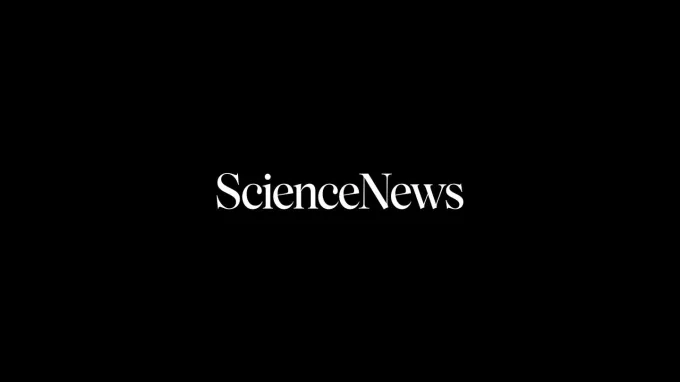Science News Magazine: Current Issue
Vol. 159 No. #8
Trustworthy journalism comes at a price.
Scientists and journalists share a core belief in questioning, observing and verifying to reach the truth. Science News reports on crucial research and discovery across science disciplines. We need your financial support to make it happen – every contribution makes a difference.
More Stories from the February 24, 2001 issue
-
 Paleontology
PaleontologyExtinctions Tied to Impact from Space
Evidence trapped in 250-million-year-old sediments may help researchers pin the ultimate blame for the massive extinctions that occurred then on the impact of an extraterrestrial object about 9 kilometers across.
By Sid Perkins -
 Health & Medicine
Health & MedicineSometimes an antibiotic is much more
By reining in destructive enzymes in the body, tetracyclines can thwart various diseases, including periodontal bone loss and cancer.
By Janet Raloff -
 Health & Medicine
Health & MedicineColor array reveals breast cancer types
A suite of genes lights up when researchers probe for cancer.
-
 Physics
PhysicsSeeming sedate, some solid surfaces seethe
Although they're as orderly as bathroom-floor tiles, surface atoms of copper--and perhaps other solids--actually roam randomly and widely within their grid.
By Peter Weiss -

Can visiting a plant ruin an experiment?
Merely walking up to a plant and handling its leaves may skew outcomes in studies of predators attacking plants.
By Susan Milius -
 Astronomy
AstronomyDistant cluster suggests low-weight cosmos
Lured by the radio beacon of a faraway galaxy, astronomers have discovered the most distant cluster of galaxies known in the universe.
By Ron Cowen -
 Astronomy
AstronomyAncient Mars water: A deep source?
A new analysis of a Mars meteorite that fell to Earth suggests that much of the water believed to have once flowed on the surface of the Red Planet came from eruptions of molten rock that originated deep within the planet.
By Ron Cowen -
 Astronomy
AstronomyCassini at Jupiter: Eyeing the Io torus
The Cassini spacecraft has captured the most detailed images ever taken of the Io torus, a doughnut-shaped ring of charged particles that surrounds Jupiter and is replenished by the planet's moon Io.
By Ron Cowen -
 Physics
PhysicsMuffled shots tell a lot about snow
A snowfield muffles gunshots in a way that can now be used to reveal important traits of the snow.
By Peter Weiss -
 Physics
PhysicsLasers nudge into nuclear medicine
Using a tabletop laser, researchers produced a medically useful isotope usually made in warehouse-size particle accelerators called cyclotrons.
By Peter Weiss -
 Health & Medicine
Health & MedicineAnti-HIV mutation poses hepatitis risk
A genetic mutation that protects people from AIDS may also make them susceptible to hepatitis C.
By Nathan Seppa -
 Health & Medicine
Health & MedicineSome HIV patients getting transplants
Organ transplants succeed in some HIV-infected people, spurring further research into this practice.
By Nathan Seppa -
 Health & Medicine
Health & MedicineAIDS drug performs well in early test
A new drug called T-1249, which keeps the AIDS virus from fusing with immune cells, proves largely safe in people.
By Nathan Seppa -
 Health & Medicine
Health & MedicineAIDS-treatment guidelines revised
A panel of scientists has changed the guidelines for prescribing medication for HIV-infected patients, considerably lowering the suggested T-cell-count and HIV-copy thresholds.
By Nathan Seppa -
 Earth
EarthA Nation Aflame
In the wake of one of the worst fire seasons in the past 50 years, scientists are assessing risk as more people move into fire-prone areas and developing ways to better predict the behavior of--and the potential for--wildfires.
By Sid Perkins -
 Astronomy
AstronomyMining the Sky
A proposed national virtual observatory, a mammoth computer database integrating spectra, images, and other information covering the entire sky, could usher in a new age of discovery in astronomy.
By Ron Cowen
